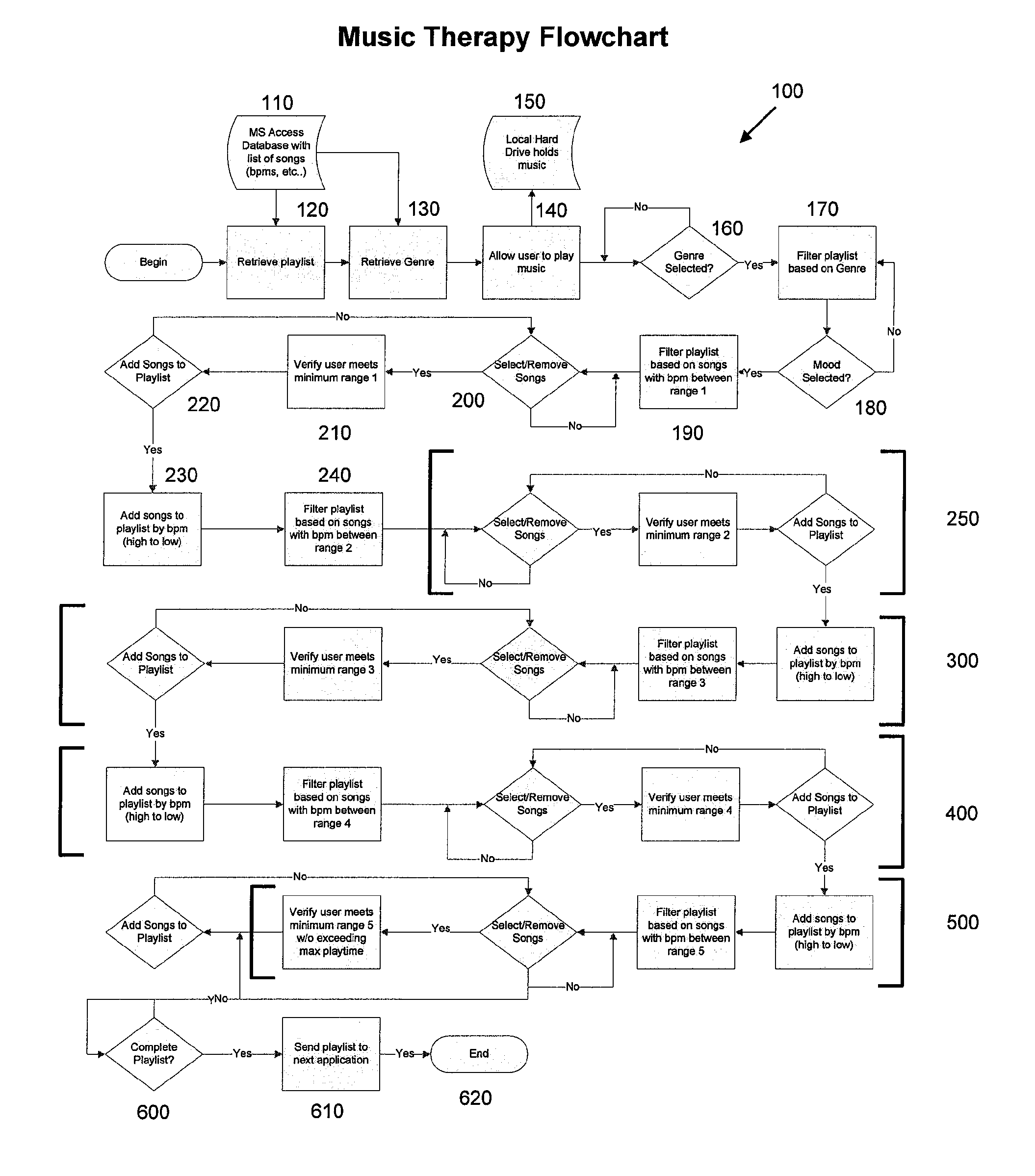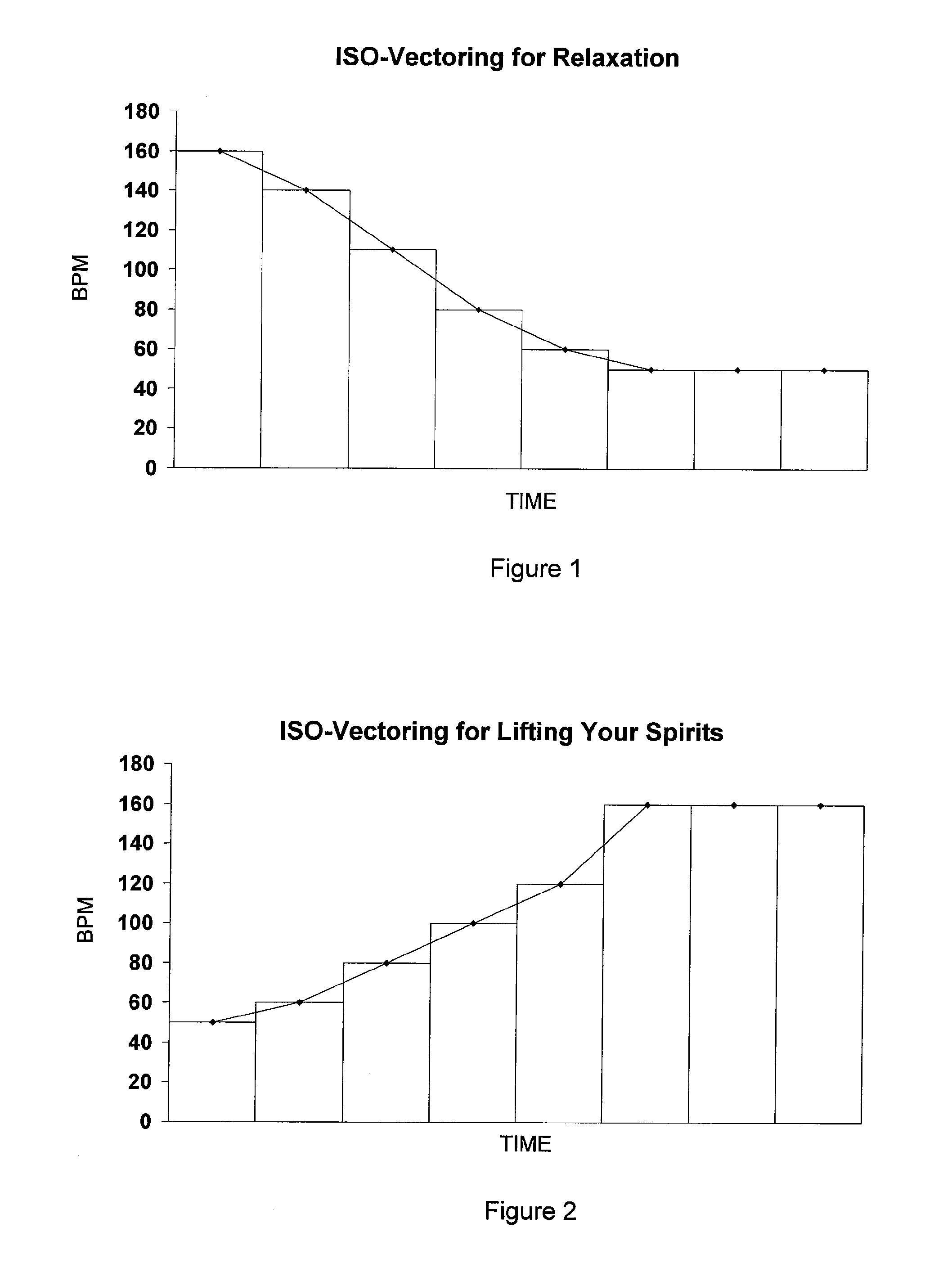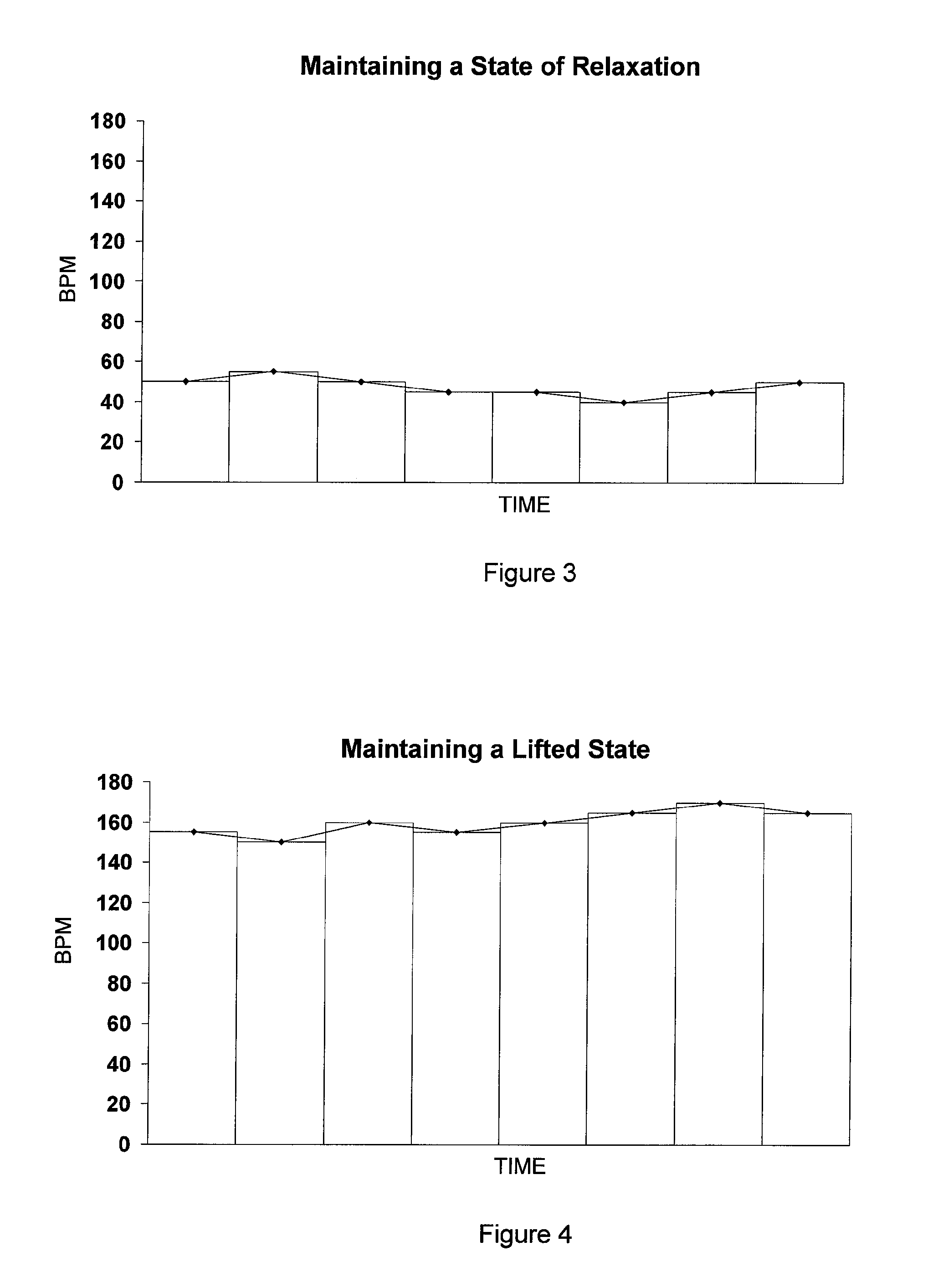Iso music therapy program and methods of using the same
a music therapy program and music technology, applied in the field of iso music therapy program and methods of using the same, can solve the problems of affecting the survival rate increasing the risk of cancer, and negative physical and emotional health consequences of patients with cancer, so as to lift the spirits of patients
- Summary
- Abstract
- Description
- Claims
- Application Information
AI Technical Summary
Benefits of technology
Problems solved by technology
Method used
Image
Examples
example 1
Monitoring Responses
Sleep Disturbances
[0091]In evaluating the effectiveness of the music therapy treatment one may monitor psychological responses and bio-responses in the patient. One such assessment may be in measuring the patient's sleep disturbances. Sleep disturbances can be assessed using the Pittsburgh Sleep Quality Index (PSQI). Buysse, D. J., et al., Pittsburgh Sleep Quality Index: A New Instrument For Psychiatric Practice and Research, Psychiatry Research 1989, 28:193-213. The PSQI is a self-rated questionnaire that assesses quality of sleep and sleep disturbances over a 1-month period as follows.
[0092]The following questions are answered:
[0093]Only self-rated questions are scored. The PSQI has good internal (0.83) and test-retest reliability (0.65-0.85) and good validity, for distinguishing between patients with depression, disorder of initiating and maintaining sleep, disorder of somnolence, and healthy controls.
example 2
Monitoring Responses
Depression in Patients
[0094]Another valuable measure in monitoring the music therapy is assessing the level of depression in the patient. Depression can be assessed using the Centers for Epidemiological Studies-Depression measures (CES-D). Radloff, L. S., The CES-D Scale: A New Self-Report Depression Scale For Research in the General Population, Applied Psychological Measurement 1977, 1:385-401. The CES-D is a well-validated 20-item self-report measure of depression that focuses on affective components of depression. Respondents rate the frequency of the behavior or feeling using a 4-point Likert-type scale ranging from “almost never” to “almost always.” Internal consistency is high in the general population and in patient populations. It also has demonstrated adequate convergent validity with other measures of depression. Radloff, L. S., The CES-D Scale: A New Self-Report Depression Scale For Research in the General Population, Applied Psychological Measurement ...
example 3
Monitoring Responses
Effectiveness of Treatment
[0095]Still another valuable indicator of the effectiveness of the treatment involves assessing changes in the mood of the patient. Changes in mood can be assessed using the Profile of Mood States (POMS). McNair, D. M., et al., Profile of Mood States, San Diego: Educational and Industrial Testing Service, 197111981. The POMS, commonly used in cancer research, is a mood adjective check-list containing six subscales: tension-anxiety, depression-dejection, anger-hostility, vigor, fatigue, and confusion-bewilderment. Reliabilities are good and range from 0.84 to 0.95. Eichman, W., The Eighth Mental Measurements Yearbook, New Jersey: The Gryphon Press, 1989. Alternatively patients may complete the POMS-SF test which is a shortened version (37 items) of the POMS for which convergent and discriminate validity of the six subscales and Total Mood Disturbance score has been established. Baker, F., et al., A POMS Short Form For Cancer Patients: Psy...
PUM
 Login to View More
Login to View More Abstract
Description
Claims
Application Information
 Login to View More
Login to View More - R&D
- Intellectual Property
- Life Sciences
- Materials
- Tech Scout
- Unparalleled Data Quality
- Higher Quality Content
- 60% Fewer Hallucinations
Browse by: Latest US Patents, China's latest patents, Technical Efficacy Thesaurus, Application Domain, Technology Topic, Popular Technical Reports.
© 2025 PatSnap. All rights reserved.Legal|Privacy policy|Modern Slavery Act Transparency Statement|Sitemap|About US| Contact US: help@patsnap.com



